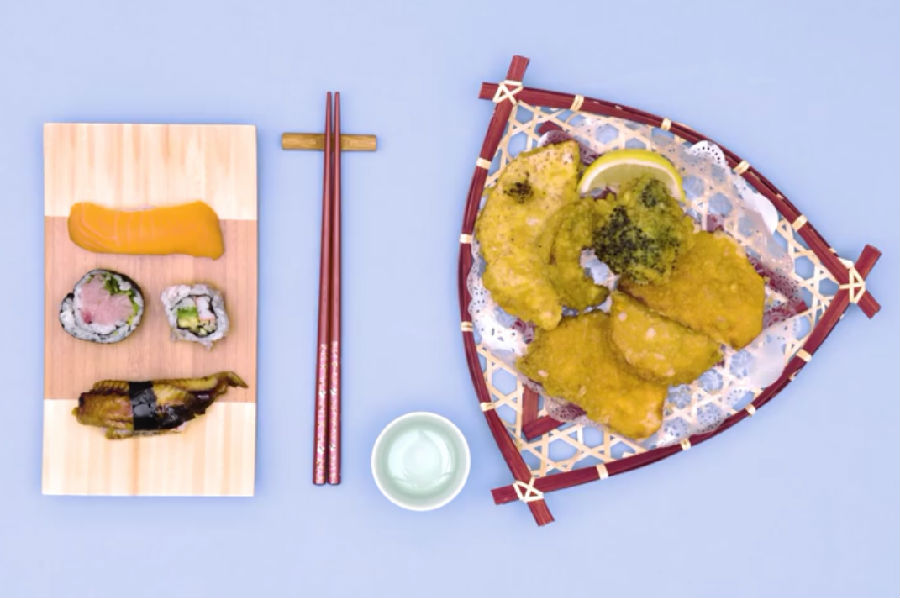(单词翻译:单击)
?When you think of Japanese cuisine, a few foods come to mind.
提到日料,大家脑海中就会浮现出各种日式美食。
Sushi, did you know that salmon sushi is actually Norwegian? Yeah, we did a story on that one.
你想到了寿司?那你知道三文鱼寿司其实来自挪威吗?当然,我们还做过一期相关的视频呢。
Maybe you think of mochi? We did that one, too.
或许你想到的是抹茶?抹茶的视频我们也做过了。
And tempura, but, guess what? Tempura is actually a Portuguese dish.
那天妇罗呢?不过,你猜怎么着?天妇罗其实是一种葡萄牙美食。
Oh, boy, here we go.
啊,我的乖乖,又来了。
The Japanese tempura you know is done two ways: either with seafood or with vegetables.
大家印象中的日本天妇罗一般有两种做法:要么搭配海鲜,要么搭配蔬菜。
Right, and the batter is light, made with cold water, wheat flour and egg. Pretty standard.
没错,少油,外加冰水、小麦粉和鸡蛋烹制而成,这是标准的做法。
This tempura can be found dating back to the end of the 16th century in Japan.
这种天妇罗的做法可以追溯到十六世纪末的日本。
But as we know, Japan is much older than that. So, why did it suddenly show up? The answer is: Portugal!
然而我们知道,日本的历史要久远得多,为何天妇罗突然就出现在日本了呢?原因是:葡萄牙。
Around 1543, a Chinese ship with three Portuguese sailors got off course and landed in Japan on Tanegashima island.
在1543年左右,一艘载着三名葡萄牙水手的中国船只偏离了航道,停靠在了日本的种子岛。
Fast forward a bit, and the Portuguese, because of this happy accident, are now trading goods, and arms, with the Japanese.
我们稍微快进一下,葡萄牙人,因为这场幸福的意外,由此开始和日本人进行商品和武器贸易。
Then, in 1639, the Portuguese were kicked out of the country.
到了1639年,葡萄牙人被逐出日本。
A few things, however, remained, including a dish of battered and fried beans called Peixinhos da Horta.
然而,雁过留痕,一道叫作Peixinhos da Horta的油炸青豆就在日本扎了根。
That's Manuela Brandao, chef at Pap'Acorda, one of the best spots in Lisbon to get Peixinhos da Horta.
这位是Manuela Brandao,是Pap'Acorda餐厅厨师,这家餐厅是全里斯本做Peixinhos da Horta做得做好的地方。
Now, of course, over the past 400 years, Japan has put its own spin on the dish,
当然,400多年过去了,这道菜早已打上了日料的印记,
but, you know, it's a fun fact next time somebody in your group orders tempura.
但是,下次大家和朋友一起出去吃饭有人点天妇罗时,这个事实也不失为一个有趣的谈资噢。


